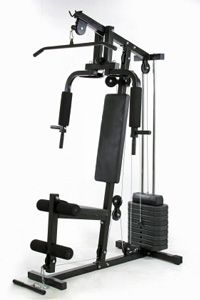Have you ever made a New Year's resolution that had something to do with losing weight or getting in better shape? If so, you're not alone. Year after year, improving personal fitness is often among the most popular yearly resolutions.
According to data recorded by the Centers for Disease Control, as of 2008, at least 15 percent of the U.S. population is considered obese (with a body mass index, or BMI, greater than 30). In six states, Alabama, Mississippi, Tennessee, South Carolina, West Virginia and Oklahoma, at least 30 percent of the population is obese. To put things in perspective, in 1994, no state had more than 19 percent of its population with a BMI greater than 30 [source: CDC].
Advertisement
With obesity comes health risks. According to WebMD, someone who is 40 percent overweight is twice as likely to die prematurely than someone who is within his or her healthy weight range [source: WebMD]. Heart disease, diabetes, high blood pressure, cancer, osteoarthritis and gout are just some of the medical conditions associated with obesity. That said, it's not too late to do something about it.
Exercise and diet are the two main components in maintaining a healthy weight. Diet is important and everyone should be wary of what they eat. Exercise, on the other hand, is often overlooked. If you're reading this article, chances are you're ready to do something about your health and physical fitness. While we won't delve into diet in this article, we will discuss all-in-one exercise equipment and give you some insight into which types of machines may work best for your needs.
Let's start with a look at the popular combinations available in the next section. Once you've learned about your options, we'll break down the pros and cons of each type of equipment in an attempt to give you the information you need to make the choice that best serves your needs. Who knows, you may find a solution that'll give you that body the Hollywood stars pay personal trainers so much to help them achieve. So put down the TV remote and learn what an all-in-one home gym can do for you.
Advertisement

